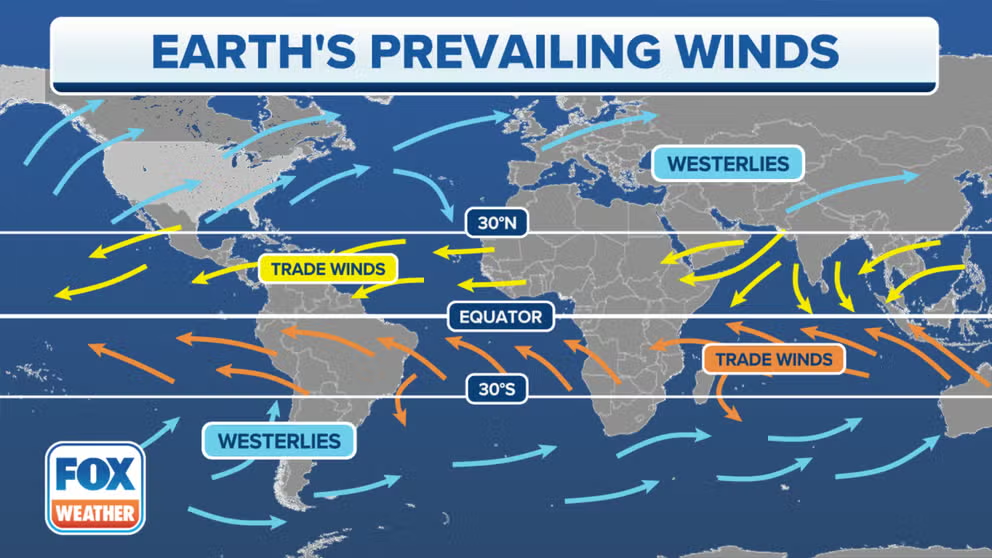What are trade winds?
Without trade winds, the Amazon rainforest would lose its constant supply of atmospheric moisture, and the deserts across north Africa would not exist.
What are trade winds?
The trade winds help ships sail west as well as play a role in steering hurricanes and other storms.
Trade winds are the persistent winds that blow westward along the equator.
Unlike jet stream winds that blow high in the atmosphere, trade winds are found closer to the Earth’s surface and between 30 degrees North and 30 degrees South of the equator.
Where trade winds come from
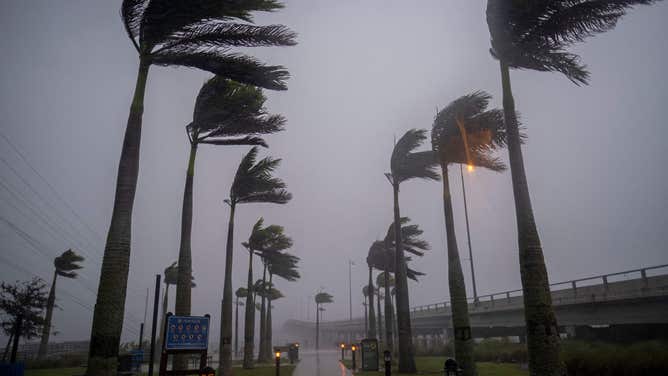
Wind blows palm trees ahead of Hurricane Ian in Charlotte Harbor, Florida, on September 28, 2022.
(RICARDO ARDUENGO/AFP / Getty Images)
The formation of trade winds involves three factors: maximum heating of the air along the equator, the cycling of air between the equator and the Earth’s poles and a phenomenon called the Coriolis force.
First, the air around the equator heats up. The equator is where the Earth is closest to the Sun, which makes the air in the region at its hottest. That warm air then rises to the higher layer of the atmosphere.
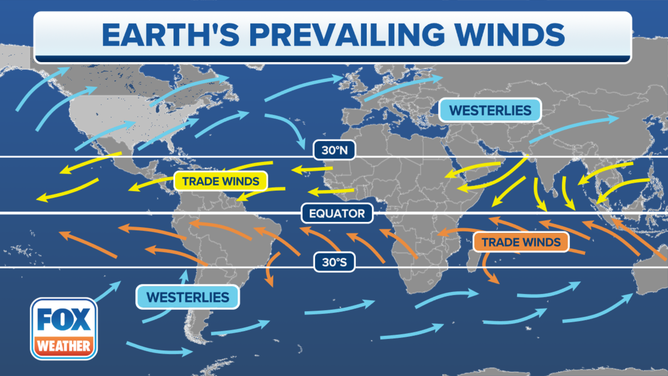
Trade winds are noted in yellow and orange arrows.
(FOX Forecast Center / FOX Weather)
As the warm air rises, it eventually cools and then sinks back to the Earth’s surface at more northern and southern latitudes. The cooler air then moves back toward the equator, where it’s once again heated up by the Sun and made to rise.
This never-ending cycle of air is called the Hadley Cell.
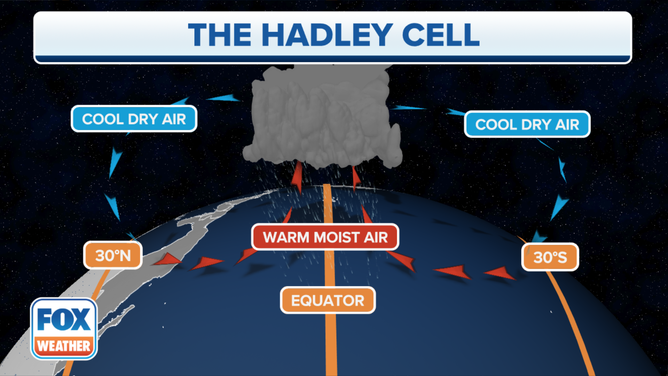
Warm air from the equator rises and then moves toward the poles, before cooling and sinking back to the Earth's surface.
(FOX Forecast Center / FOX Weather)
The next factor in creating trade winds involves the movement of the Earth.
While air is cycling through the Hadley Cell, the Earth is spinning. This rotation causes the cycle of air to be deflected, and rather than blow north-to-south, the air instead blows east-to-west.
This westward deflection of air – aided by the Earth’s rotation – is the Coriolis force.
The Coriolis force, combined with the cycling of air from the equator, creates trade winds.
The role of trade winds in weather and climate
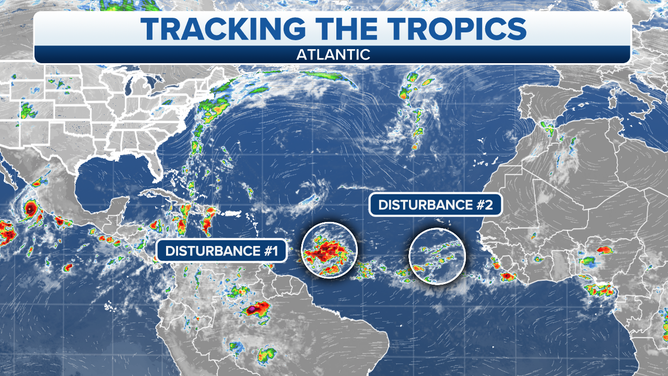
A map showing two tropical disturbances in the Atlantic Ocean on October 2, 2022. Both formed off the west coast of Africa before moving west toward North and South Americas.
(FOX Weather)
Since trade winds blow westward, they can cause the westward movement of storms.
For example, in the equatorial region of the Atlantic Ocean, weak and disorganized clusters of storms that form off the west coast of Africa can be steered westward to North and South Americas by trade winds.
This movement becomes more complicated when the storms graduate to more organized tropical disturbances and then a hurricane, but according to the FOX Forecast Center, they too often have a westward movement due to the trade winds.
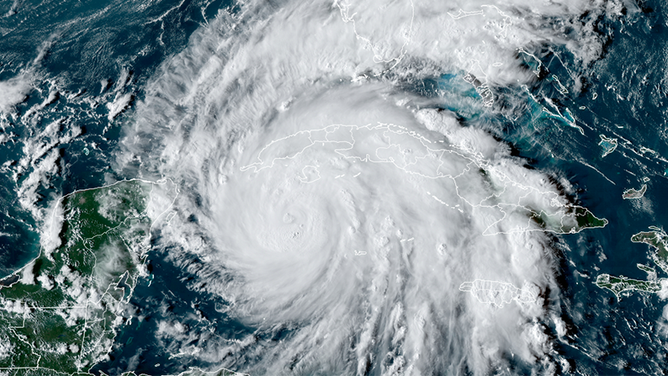
Ian, a disturbance that moved across the Atlantic Ocean and into the Caribbean Sea before striking the U.S. as a hurricane.
(NOAA)
Apart from individual weather phenomena, trade winds play an even bigger role in influencing the climate.
For example, the trade winds feed the Amazon Rainforest in South America with a constant supply of abundant atmospheric moisture. Also, the trade winds pull away moisture from North Africa, which in turn creates the region’s ancient deserts.
According to the FOX Forecast Center, "Everything in the atmosphere is connected, and the trade winds are one example showing this correlation."
